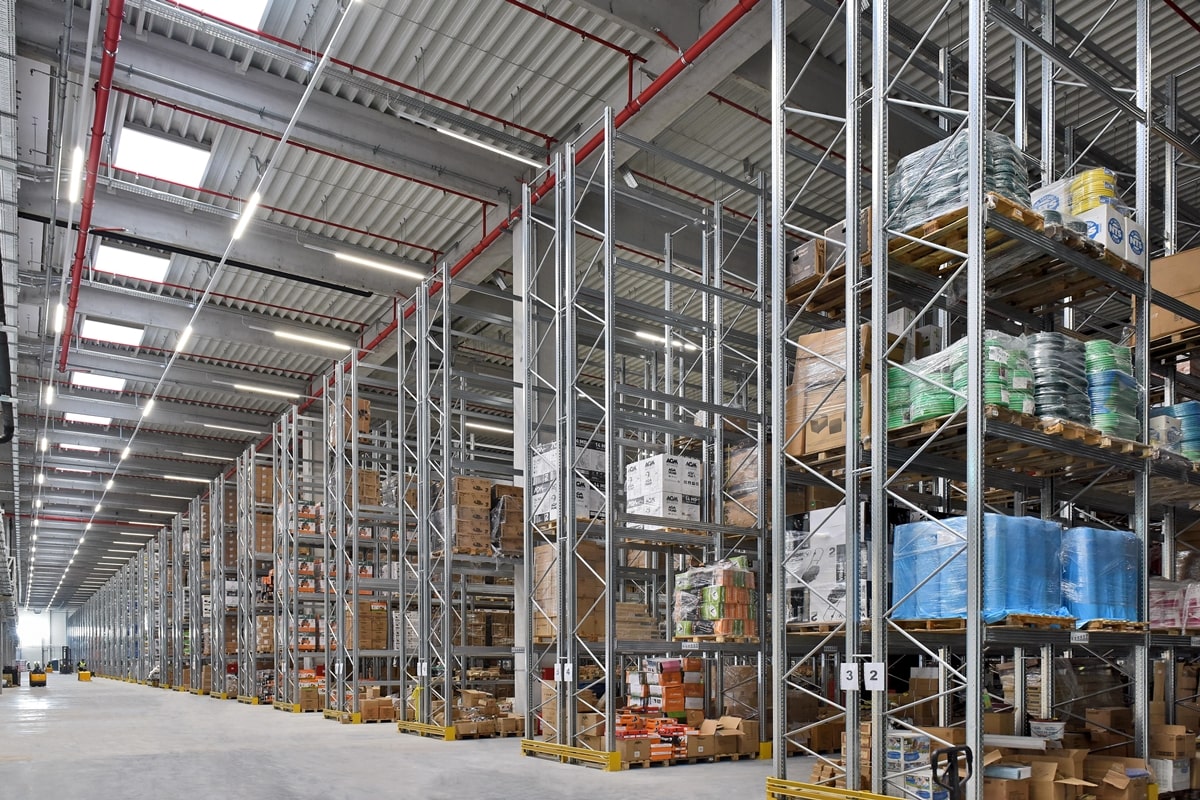Supermarkets have an indispensable role in today's retail industry. Wide product range, rich variety in different categories and high stocks cause supermarkets to work with a heavy business volume. This intensity includes many important factors from supply chain management to stock control, from operational efficiency to customer satisfaction. This is where supermarket warehouse shelving system design and construction becomes a critical element to the success of the business.

Supermarkets are complex spaces that operate with a wide range of products and high stocks. To maintain this balance and manage processes smoothly, a strategic warehouse racking system design becomes critical. The right shelving systems play a major role in product display, stock management and the effectiveness of operations.
Identifying Optimized Storage Solutions
In order to create an effective warehouse racking system, it is important to determine the storage needs correctly. To determine these needs, the following factors should be carefully considered.
- Product Types, Sizes and Quantities: Which products do you plan to store? What are the different sizes and quantities of these products?
- Storage Time and Product Cycle Rate: How long will products be stored? How should the duration of the products in the warehouse and the product cycle rate be determined?
- Product Features and Storage Requirements: What are the features of products that require storage? For example, are there products that require cooling?
- Arrangement of Storage Area: How can the warehouse area be organized effectively?
Efficient Use of Warehouse Space: Strategies and Recommendations
Optimizing the warehouse space is of great importance in order to use the warehouse racking system effectively. Here are the strategies to be followed for effective use of warehouse space;
- Dimensioning: The dimensions and height of the warehouse area must be accurately measured. This means that the warehouse racking system can fit neatly and product storage capacity can be maximized. The physical characteristics of the space provide a basic guide for optimal placement of rack systems.
- Warehouse Storage Plan: The warehouse area should be organized in the most effective way according to the type of products to be stored. Product groups should be determined and shelf space should be allocated according to the needs of each group. Accessibility within the warehouse should be facilitated by storing similar products together. Planning should be done considering the width of the warehouse corridors.
- Warehouse Layout Design: The layout design of the warehouse space is vital for optimizing the workflow and efficiency within the warehouse. This design is accomplished by optimal positioning of storage equipment, racking systems and warehouse space. Emergency measures such as safe exit routes, fire prevention systems should also be part of this design.
Choosing an Effective Warehouse Racking System: Key Factors and Strategies
Warehouse shelving systems ensure that products are stored neatly and easily accessible. It is critical to consider the following factors when choosing rack systems.
- Shelving Types: The characteristics of the products to be stored and the warehouse layout may require the use of different types of racking systems. Various types of shelving are available, such as pallet racking systems, partition racking systems or retail racks. The shelf type that best suits the storage needs of the supermarket should be selected. The most effective choice should be made by considering the size, weight and in-warehouse regulations of the products.
- Shelf Capacities: The capacities of the racking systems should be carefully determined according to the storage needs. Shelf capacities affect the number of items to be stored, as well as factors such as safety and accessibility. Choosing the right capacity both ensures safe storage of products and helps to use the warehouse space in the most effective way.
- Shelf Layout and Organization: Shelving system layout and in-warehouse organization is a critical element for warehouse efficiency. An organized and logical separation of product groups provides quick access to products. Shelving should be strategically planned to optimize the flow of movement within the warehouse.
Effective Warehouse Racking System Installation and Management: Steps and Recommendations
The installation and arrangement of warehouse rack systems ensures the most efficient use of warehouse space. You can successfully complete this process by following the steps below.
- Rack Installation: Installation of rack systems requires careful planning and use of professional equipment. Correct mounting is critical to ensuring the stability and safety of rack systems. It is important to perform the assembly operations with the help of experienced personnel or expert team in order to prevent possible problems.
- Product Grouping and Labeling: Storing products in groups with similar characteristics greatly simplifies warehouse management. By adding labels to each shelf or products on the shelf, you can ensure that products are quickly and easily accessible. These labels also support the proper storage of products and reduce the risk of damage.
- Regular Maintenance and Control: Supermarket warehouse shelf systems should be checked regularly and maintained periodically. This ensures that racking systems operate safely and effectively. Regular maintenance and inspections are vital to detect potential problems early and take necessary action when necessary. In this way, shelf systems can continue to function for a long time and without any problems.
Installing and managing Supermarket Warehouse shelving systems is an essential step in improving warehouse efficiency and streamlining operations. By following these steps correctly, you can use your warehouse space in the most effective way and store your products in an organized manner.
Effective Staff Training: Important Considerations for Correct Use of Warehouse Racking Systems
After the warehouse racking system is built, it is important to organize an effective training process so that the personnel can use this system correctly. Here are the important elements to consider in personnel training;
- Shelving Systems and Product Placement: Staff need to learn how to use shelving systems and how to place products correctly. Appropriate shelf areas should be selected according to the characteristics of the products and regular storage methods should be explained.
- Warehouse Layout and Efficient Use: Staff must understand how to organize the warehouse layout and how to use warehouse space in the most efficient way. The orderly and logical separation of product groups optimizes the flow of movement within the warehouse.
- Occupational Safety and Use of Shelves: Personnel must have knowledge of occupational safety rules and the correct use of rack systems. Issues such as the carrying capacity of rack systems, heights above the rack and safe access methods should be emphasized.
The training process ensures that personnel comply with safety standards, use racking systems effectively, and run operations smoothly. The correct training of the personnel supports the efficient conclusion of the warehouse racking system construction.






